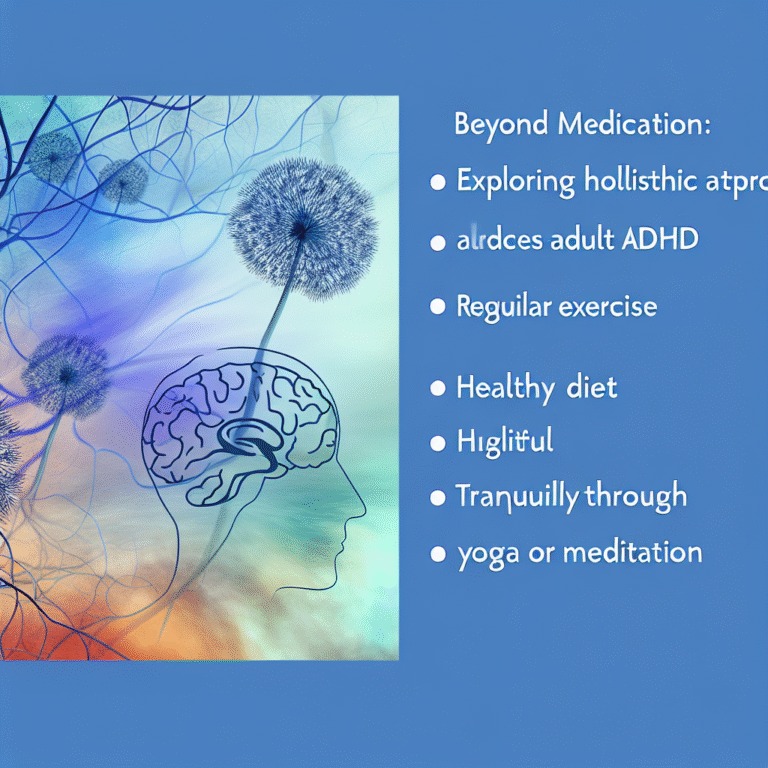
Triggers Uncovered: How Everyday Situations Can Impact PTSD
Introduction
Imagine waking up one day, going through your daily routine, and suddenly feeling an overwhelming tide of anxiety wash over you; you’re back in that moment—a car crash, a traumatic loss, or the echoes of battle. For individuals with Post-Traumatic Stress Disorder (PTSD), everyday situations are not merely routine—some can become tripwires igniting intensely distressing memories and reactions. The reality of living with PTSD often involves navigating a world that feels laden with potential triggers. In this article, we will uncover the nuanced relationship between everyday circumstances and the triggers that can impact PTSD, while providing valuable insights into management and coping strategies.
Understanding PTSD and Its Triggers
What is PTSD?
Post-Traumatic Stress Disorder is a mental health condition that is triggered by experiencing or witnessing a traumatic event. Common symptoms include flashbacks, hyper-vigilance, emotional numbness, and vivid nightmares. While many associate PTSD with military service, it can arise from various traumatic experiences, including natural disasters, sexual assault, serious accidents, or sudden loss.
The Nature of Triggers
Triggers are stimuli that can provoke unavoidable memories or reactions related to a traumatic event. They can be anything from a specific sound, smell, or sight to more abstract situations like certain social interactions or even conversations. Understanding these triggers is essential for individuals with PTSD and their loved ones to manage daily life effectively.
Case Study: Consider John, a combat veteran who hears fireworks on the Fourth of July. For John, the sound resonates with the explosions he experienced during combat, leading to moments of distress. This illustrates the delicate interplay of triggers and PTSD in everyday settings.
Categories of Triggers
External Triggers
External triggers are environmental stimuli that provoke reactions. These can range from:
- Sensory Triggers: Sounds (e.g., fireworks), sights (e.g., crowded places), or smells (e.g., particular perfumes).
- Situational Triggers: Places (e.g., hospitals, war zones) or events (e.g., anniversaries of trauma).
- Social Triggers: Interactions with people who remind the individual of their trauma.
Table 1: Common External Triggers and Examples
| Trigger Type | Examples |
|---|---|
| Sensory | Loud noises, bright lights, crowds |
| Situational | Driving, being in hospitals |
| Social | Encounters with authority figures |
Internal Triggers
Internal triggers stem from one’s thoughts, memories, or emotional states. They manifest as:
- Thought Patterns: Negative self-talk or catastrophic thinking.
- Emotional States: Feelings of anger, fear, or confusion that arise without identifiable external cause.
Case Study: Sarah, a young woman who survived a serious accident, experiences intense anxiety when she feels out of control—often triggered by losing her keys or feeling stuck in traffic. These internal triggers remind her of the helplessness she experienced during her traumatic event.
The Impact of Situations on PTSD
Daily Life and PTSD
Day-to-day activities can become battlegrounds for those living with PTSD. The unpredictability of everyday life can amplify anxiety, resulting in avoidance behaviors where individuals steer clear of places or situations that could potentially trigger them.
Example: Social interactions that require sharing personal experiences can draw on triggers tied to PTSD. Engaging with family, friends, or coworkers might evoke a sense of vulnerability, subtly reminding the individual of past traumas.
Coping Strategies
While triggers can feel debilitating, individuals can adopt several strategies to better manage reactions and anxieties:
Awareness and Education: Understanding personal triggers helps individuals anticipate and prepare for stressful situations.
Grounding Techniques: Practices like mindfulness, deep breathing, or sensory awareness can help regain control when a trigger is encountered.
- Therapeutic Support: Engaging with therapists skilled in trauma-informed care ensures that one has a solid support system to navigate challenges.
Table 2: Effective Coping Strategies for Managing Triggers
| Strategy | Description |
|---|---|
| Awareness | Keeping a trigger journal to track patterns and responses |
| Grounding Techniques | Practicing mindfulness or deep breathing |
| Therapeutic Support | Regular sessions with a trauma-focused therapist |
Case Study: Linda, who was assaulted at a party, learned through therapy to identify her triggers—specifically large gatherings—and developed a strategy to increase her comfort by attending smaller social events with close friends.
The Importance of Support
Building a Supportive Environment
The environment around an individual with PTSD plays a significant role in their healing process. Support can come from:
- Family and Friends: Providing listening ears and understanding.
- Support Groups: Connecting with those undergoing similar circumstances.
- Educational Resources: Offering insights into PTSD, reducing stigma, and fostering empathy.
The Role of Communication
Open communication about PTSD triggers can enhance interpersonal relationships and reduce anxiety. Individuals benefit from discussing their triggers without judgment, ensuring loved ones understand what is helpful or harmful.
Case Study: After discussing her triggers openly, Emma found that her partner became more patient and responsive during moments of anxiety, significantly improving her sense of safety.
Conclusion
Triggers uncovered: How everyday situations can impact PTSD is a journey that resonates with many individuals and families. Acknowledging that triggers vary vastly between individuals allows for nuanced conversations about PTSD and its management. By raising awareness of common external and internal triggers, as well as employing effective coping strategies, individuals can reclaim aspects of their lives impacted by trauma.
Remember, while everyday situations can evoke distressing memories, they don’t define one’s entire experience. Healing is a journey paved through patience, support, and proactive strategies aimed at facing challenges, rather than avoiding them.
FAQs
1. What are some common triggers for PTSD?
Common triggers can include sensory stimuli like loud noises, significant dates, places associated with trauma, or social situations that recreate feelings of vulnerability.
2. Can PTSD symptoms change over time?
Yes, symptoms can fluctuate in intensity based on various factors such as stress levels, environmental changes, or significant life events.
3. How can I help someone with PTSD?
Listen compassionately, offer support, encourage professional help, and educate yourself about PTSD to foster empathy.
4. What should I do if I experience a trigger?
Practice grounding techniques, seek support from trusted individuals, and consider speaking with a therapist for effective coping strategies.
5. Are there therapies specifically targeting PTSD?
Yes, therapies like Cognitive Behavioral Therapy (CBT), Eye Movement Desensitization and Reprocessing (EMDR), and traumatic incident reduction are well-regarded in treating PTSD.














